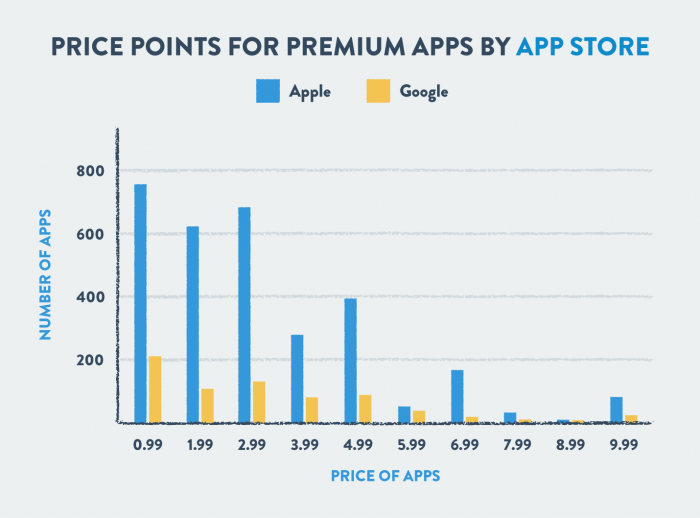When you look at the duopoly of the Google Play and Apple App Stores, you might be left wondering how anyone makes money on a mobile app as most of them appear to be free. Considering some of the apps likely installed on your device and noticing that you don’t pay to use Google Maps, Instagram, or Facebook—you might also wonder if all apps are free. If you plan to design a mobile app, you’ll want to ensure there will be a strong ROI.
In a recent study conducted by CleverTap, they reveal that over 43 percent of apps in the major app stores are not free, even if their price tags are as low as $0.99. Another interesting mobile app statistic is that over 44 percent of premium apps are games.
So, what strategies are these paid mobile apps employing to monetize compared to free apps?
Pricing models for premium apps vary from the absolute bottom of the price points at $0.99 and span into the hundreds of dollars. A large majority of premium apps, however, remain in the $0.99-$4.99 range, as you can see in the chart below:
Interestingly, the $5.99, $7.99, and $8.99 price points are widely avoided. This could be the result of A/B testing that has lead mobile marketing teams to move towards a more appealing price point.
Although the freemium model is popular among mobile app creators the premium model for apps is still viable. One interesting analysis is to compare app ratings for free and paid apps. Theoretically, users of free apps would have a bit more patience with any user interface bugs they may experience on a free app. As you can see in the graph below, however, is that ratings for paid apps and free apps follow a similar trend.
In fact, 78% of the Google Play apps in the data were rated 4 or more stars.
If you want to learn more about how premium apps are positioning their business models to compete in an environment of free products, refer to the infographic from CleverTap below:
Find a Home-Based Business to Start-Up >>> Hundreds of Business Listings.




















































